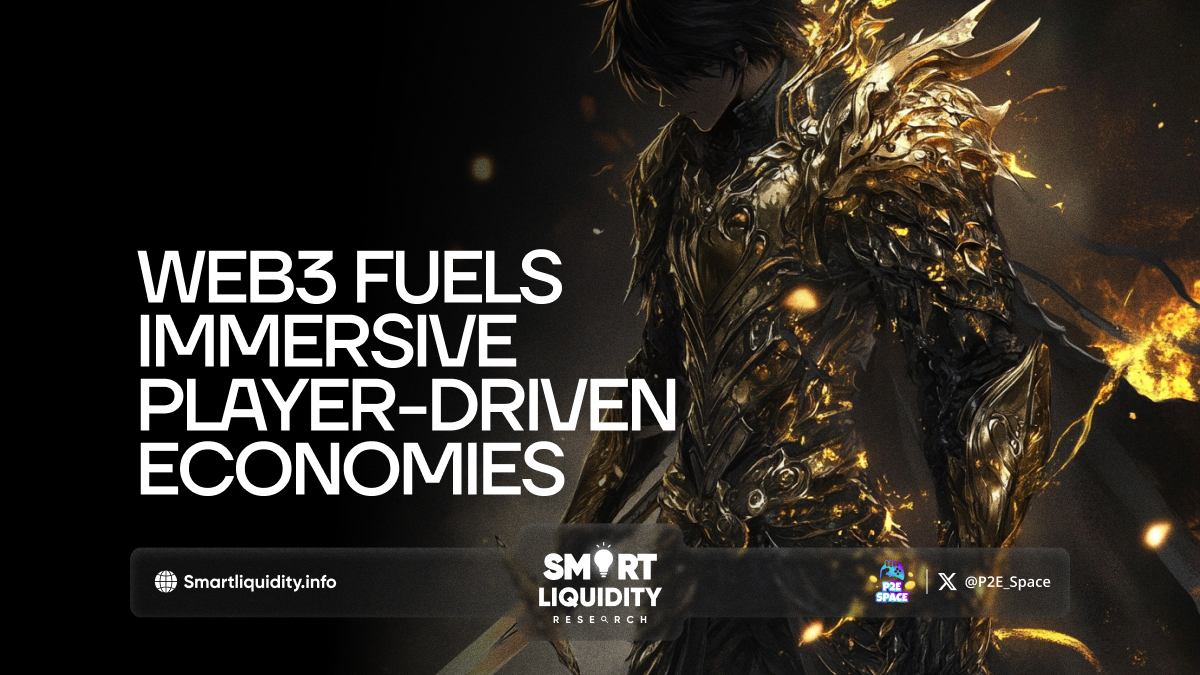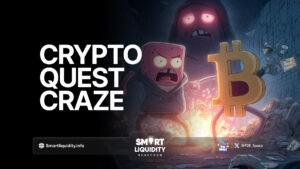Web3 Fuels Immersive Player-Driven Economies


In the world of gaming, the evolution from console to cloud-based platforms has changed how we play, but now, Web3 is fundamentally reshaping how we experience gaming itself. No longer are players passive consumers in pre-determined worlds; they are evolving into active participants in immersive, player-driven economies. Web3, through blockchain, DeFi, and NFTs, empowers players as creators and stakeholders, transforming the gaming landscape.
The Heart of Web3 Gaming: Ownership and Value
At its core, Web3 introduces true asset ownership, a radical shift from traditional gaming. In conventional games, assets—be they weapons, characters, or digital real estate—exist solely within the confines of the game. Players invest time and sometimes money, yet, when they log out, they leave empty-handed. Web3 flips this model on its head, giving players actual ownership of in-game assets through blockchain-based NFTs. These assets aren’t just trophies; they’re valuable items players can trade outside the game, creating real financial opportunities.
Imagine a sword earned after hours of grinding in a Web3-based game. That sword, an NFT, holds value outside of its virtual world. You might sell it to another player, or even loan it out to earn passive income. This ownership opens doors to an economy where players aren’t merely spectators; they are entrepreneurs within the game, creating vibrant, player-driven marketplaces.
Play-to-Earn: A Game-Changer for Players
Web3 enables the Play-to-Earn (P2E) model, where players are rewarded in tokens or cryptocurrencies for their in-game activities. Instead of spending money on in-game purchases, players can earn by completing quests, participating in battles, or building assets within the game. These rewards aren’t limited to in-game achievements; they hold real-world value. For example, Axie Infinity, a well-known Web3 game, has empowered players in some regions to make a living solely from in-game activities. In places where economic opportunities are scarce, P2E is a revolutionary way to generate income.
These player-driven economies transcend geographical borders. When gamers across the globe participate in Web3 ecosystems, they forge connections and contribute to a universal economy that’s shaped by shared experiences and investments. It’s more than just “playing a game”—it’s contributing to and profiting from an expansive, interconnected financial ecosystem.
Decentralization Empowers Players
Centralized control often limits traditional gaming ecosystems, where developers decide game rules, asset distribution, and even currency value. Web3 dismantles this dynamic, leveraging decentralized protocols where power shifts into the hands of the players. With decentralized autonomous organizations (DAOs), gamers have a say in game updates, asset pricing, and in-game economy regulations. Players no longer need to rely on developers to keep the game balanced or fair; they have voting power and direct input in the game’s future.
This decentralization fosters a more transparent and democratic environment, where trust is distributed, and players work together to make decisions that enhance the experience for everyone. Games like Decentraland and The Sandbox embody this ethos by giving players a stake in how the game world evolves. Gamers can vote on land use, gameplay enhancements, and even the game’s economic policies, crafting a more inclusive and engaging experience for all.
The Role of Interoperability in Expanding Player Economies
One of the most remarkable elements of Web3 gaming is interoperability, where in-game assets can move between different game worlds. Imagine if a character you developed in one game could be used in another, or if a sword crafted in one virtual realm had value in a different game entirely. This level of interoperability builds cohesive ecosystems where assets transcend individual games, fostering greater flexibility and asset utility.
Through interoperable assets, players aren’t limited by isolated game worlds; they can carry value across platforms. Blockchain technology enables this, allowing for a unified economic layer across multiple games and applications. The success of projects like Polkadot and Cosmos in creating blockchain interoperability is paving the way for gaming universes that aren’t confined to a single game or ecosystem. This is especially exciting for gamers, as they aren’t forced to “start over” in new games but instead benefit from interconnected, persistent value across the board.
Challenges and Future Horizons
While Web3 gaming holds enormous potential, it’s not without hurdles. Scalability, security concerns, and regulatory oversight can pose challenges. Transaction fees remain a barrier to adoption, and blockchain assets need strong security to protect players’ investments. Additionally, regulatory frameworks around digital assets and cryptocurrencies vary by region, creating a fragmented landscape.
However, the industry is innovating rapidly, addressing these issues with new solutions like layer-two scaling, sidechains, and advanced security protocols. As technology evolves, the gap between potential and practical use will close, enabling seamless, global player-driven economies.
Conclusion: The Future of Gaming Is Here
Web3 isn’t just adding a layer to gaming—it’s a new foundation that transforms how games are designed, experienced, and monetized. This shift empowers players, offering them the chance to be owners, creators, and investors in virtual worlds. With blockchain technology, Decentralized governance and asset interoperability are turning gaming from a hobby into a lifestyle with real economic rewards.
Player-driven economies in Web3 empower players as stakeholders in virtual economies that reflect real-world opportunities. This new gaming paradigm lets players turn their time, skill, and creativity into tangible assets with real-world value. And for the first time, players aren’t just in the game—they own it.




